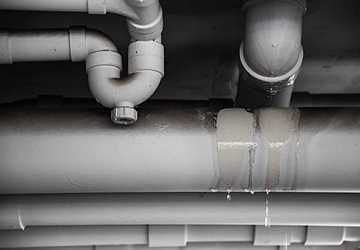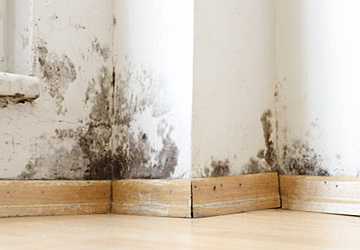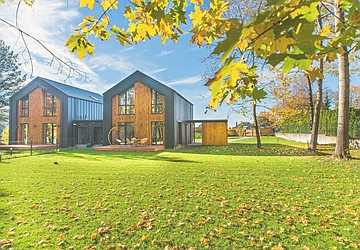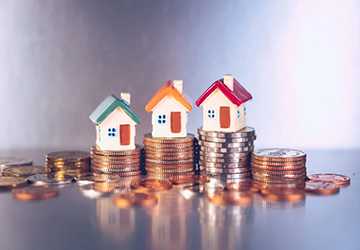
8 Most Common Home Inspection Issues and How to Address Them
sana
Have you recently purchased a new home or are you planning to sell your old home? Are you dreading your upcoming home inspection?
A home inspection can be a daunting task for both new and experienced homeowners. Everyone needs expert advice at some point, especially when it comes to making important financial decisions.
We understand how overwhelming it can be when you feel like you are not fully prepared for what is to come. This blog post is just for you. It walks you through the eight most common home inspection problems and how to fix them.
So sit back, take a deep breath, and dive into it. You have peace of mind.
Solving the 8 Most Common Home Inspection Problems
Before we get into the details, let's give a quick overview of what we'll be discussing. We've uncovered eight common problems that arise during a home inspection and show how to fix them.
Knowing this, you can feel confident in your understanding and preparation. So shall we begin?
1. Wiring error
Wiring problems are one of the most common findings during a home inspection. Whether it's outdated wiring systems, open junction boxes or inadequate fuse boxes - they all carry risks.
Problems arise: Incorrect wiring not only causes frequent power outages, but also greatly increases the risk of electrical fires.
Solution to your problem: You can do the following:
● Have a licensed electrician do a thorough inspection
● Upgrade any outdated cabling systems
● Install sufficient safety measures such as circuit breakers
Remember that fixing wiring problems will not only improve the security of your home, but also its resale value.

2. Poor drainage
Drainage problems are another common problem found during inspections. These could include downspouts that don't direct water out of the house, or landscaping issues that cause standing water.
Problems it causes: Over time, poor drainage can lead to water damage, mold growth, and even foundation problems.
Solution to Problem: The following are possible solutions:
● Adjust landscaping to direct water away from the property
● Lengthen the downspout or change the direction of the downspout
● Consider French drainage in case of emergency
Fixing drainage problems early can save thousands of dollars in potential repair costs.
3. Damaged roof
The roof of a home is the first line of defense against natural disasters. Shingle, roof, or aging issues can make a roof weak.
Problems it causes: Roof problems can lead to home flooding and, if not addressed, can lead to costly repairs or replacements.
Solution to your problem: You can do the following:
● Regular maintenance and inspection for early signs of wear.
● Replace damaged or missing shingles immediately.
● For more serious problems, such as sagging or leaking, please consult a professional.
A well-maintained roof can last for decades and prevent many other potential problems in your home.
4. Structural problems
Topic Introduction: Problems with the foundation or overall structure of a home are a serious problem when inspecting.
Problems it causes: Structural problems can jeopardize the safety of your home and lead to costly repairs.
Solution to Problem: The following are possible solutions:
● Hire a civil engineer to conduct a thorough assessment.
● Regularly check the foundation for cracks or displacement.
● Water leaks around the house should be repaired immediately to prevent seepage into the foundation.
These issues should never be ignored as they can cause more damage over time.
5. Plumbing problems
Home inspections often reveal plumbing problems, including old pipes, slow drainage, or low water pressure.
Caused problems: If not addressed early, these problems can lead to water damage, reduce the usability of the home, and require costly repairs or replacements.
Solution to Problem: The following are possible solutions:
● Regular sanitary maintenance and timely modernization can prevent many problems.
● Leaking faucets or toilets should be repaired immediately to avoid wasted water and possible water damage.
● Slow drains may require professional cleaning to prevent further clogging.
Always remember that small leaks can lead to serious problems if not addressed promptly.
6. Problems with the HVAC system
Over time, HVAC systems can lose efficiency due to age, lack of maintenance, or poor installation.
Problems it causes: An inefficient HVAC system can lead to higher energy bills and poor temperature regulation in your home.
Solution to Problem: The following are possible solutions:
● Regular cleaning and maintenance of your HVAC system can significantly increase its lifespan and efficiency.
● Frequent air filter changes can improve the air quality in your home.
● Seek professional help if the system is old or not heating or cooling effectively.
A well-maintained HVAC system is critical to the comfort and health of the occupants of a home.

7. Mold and Mildew
Mold is common in damp spaces and can cause serious health problems.
Problems it causes: In addition to the potential health risks, the presence of mold can also indicate a water problem that could damage the home's structure.
Solution to Problem: The following are possible solutions:
● Maintain good ventilation in damp areas such as bathrooms and basements.
● Immediately clean up the leak.
● When removing mold, seek professional help to ensure all spores are removed.
Keeping your home dry and well-ventilated can greatly reduce the risk of mold.
8. Poor insulation and ventilation
Insufficient insulation and poor ventilation can lead to all kinds of problems in a home.
Problems caused: These problems can lead to higher energy bills, humidity and an uncomfortable living environment.
Solution to Problem: The following are possible solutions:
● Add or replace attic or wall insulation as needed.
● Make sure all areas of the house are well ventilated.
● Install energy-saving doors and windows to reduce heat loss.
Good insulation and ventilation make the house not only more comfortable, but also energy efficient.
Plan your course with the Home Inspection Challenge
A home inspection doesn't have to be a nerve-wracking process. Knowing the most common problems and their solutions will help you make informed decisions and take preventive measures.
Stay proactive and informed, because your home inspection should be a valuable tool, not a source of stress. This is your home and you deserve to keep it in top condition.
Remember, the end goal is not just to pass an inspection, but to ensure the safety and longevity of your home.




